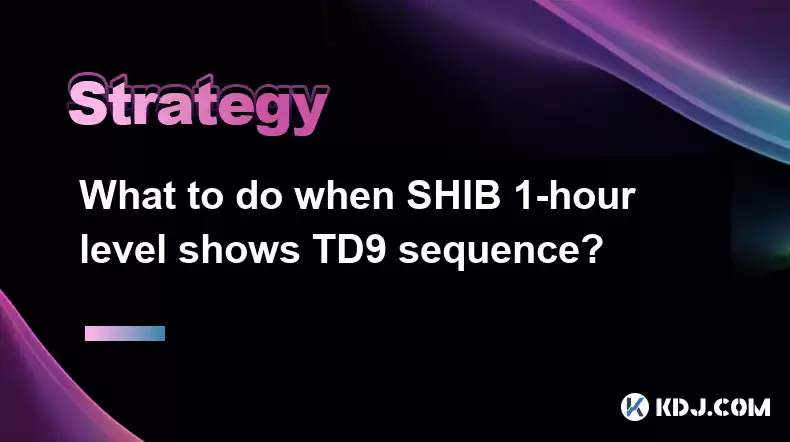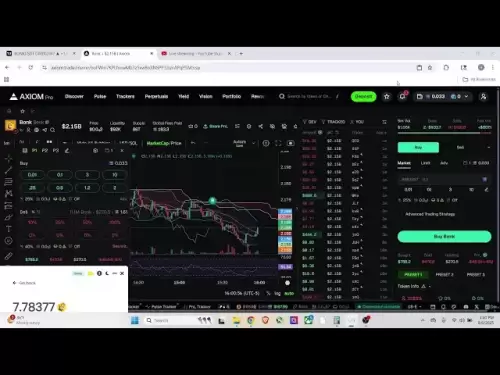-
 Bitcoin
Bitcoin $115100
1.27% -
 Ethereum
Ethereum $3675
2.71% -
 XRP
XRP $2.995
1.45% -
 Tether USDt
Tether USDt $1.000
0.02% -
 BNB
BNB $769.8
2.64% -
 Solana
Solana $168.0
3.25% -
 USDC
USDC $0.9999
-0.01% -
 TRON
TRON $0.3371
1.48% -
 Dogecoin
Dogecoin $0.2051
3.36% -
 Cardano
Cardano $0.7394
2.30% -
 Hyperliquid
Hyperliquid $38.15
0.42% -
 Stellar
Stellar $0.3966
-0.36% -
 Sui
Sui $3.486
2.93% -
 Chainlink
Chainlink $16.72
2.52% -
 Bitcoin Cash
Bitcoin Cash $568.0
4.36% -
 Hedera
Hedera $0.2440
2.59% -
 Ethena USDe
Ethena USDe $1.001
0.04% -
 Avalanche
Avalanche $22.16
2.06% -
 Litecoin
Litecoin $119.1
-0.73% -
 UNUS SED LEO
UNUS SED LEO $8.991
0.04% -
 Toncoin
Toncoin $3.232
-0.39% -
 Shiba Inu
Shiba Inu $0.00001233
2.82% -
 Uniswap
Uniswap $9.717
2.53% -
 Polkadot
Polkadot $3.664
1.85% -
 Dai
Dai $1.000
0.01% -
 Monero
Monero $281.2
-3.89% -
 Bitget Token
Bitget Token $4.350
1.55% -
 Cronos
Cronos $0.1428
5.07% -
 Pepe
Pepe $0.00001050
3.68% -
 Aave
Aave $262.3
3.54%
What to do when SHIB 1-hour level shows TD9 sequence?
When a TD9 sequence appears on the SHIB 1-hour chart, traders should confirm the signal with additional indicators and manage risks effectively to capitalize on potential reversals.
Apr 20, 2025 at 03:21 pm

When the SHIB 1-hour level shows a TD9 sequence, it's important for traders to understand what this technical indicator means and how they can use it to inform their trading strategies. The TD9, or Tom DeMark Sequential, is a popular tool among traders for identifying potential reversals in price trends. In this article, we will explore what to do when you encounter a TD9 sequence on the SHIB 1-hour chart, including how to interpret the signal, what steps to take, and how to manage risks effectively.
Understanding the TD9 Sequence
The TD9 sequence is a part of the Tom DeMark Sequential indicator, which aims to predict price exhaustion points in a market trend. When a TD9 setup completes on the SHIB 1-hour chart, it suggests that the current trend may be nearing its end. A TD9 setup is identified when there are nine consecutive candles where the high of each candle fails to exceed the high of the candle four periods earlier, or the low of each candle fails to fall below the low of the candle four periods earlier.
For a bullish TD9 setup, the condition is met when the current candle's low fails to exceed the low of the candle four periods earlier. Conversely, for a bearish TD9 setup, the current candle's high fails to exceed the high of the candle four periods earlier. This sequence signals that the market might be ready for a potential reversal.
Identifying a TD9 Setup on SHIB 1-Hour Chart
To identify a TD9 setup on the SHIB 1-hour chart, traders need to follow these steps:
- Open your trading platform and navigate to the SHIB 1-hour chart.
- Add the Tom DeMark Sequential indicator to your chart if it's not already included. Most trading platforms offer this indicator as part of their technical analysis tools.
- Observe the price action and count the candles that meet the criteria for a TD9 setup. For a bullish setup, you'll be looking at the lows of the candles, and for a bearish setup, you'll focus on the highs.
- Confirm the TD9 sequence when you see nine consecutive candles meeting the criteria. This indicates that a potential reversal might be on the horizon.
Interpreting the TD9 Signal
Once you've identified a TD9 sequence on the SHIB 1-hour chart, the next step is to interpret the signal correctly. A completed TD9 setup suggests that the current trend is likely to reverse. However, it's crucial to wait for confirmation before taking any action.
- For a bullish TD9 setup, look for a candle that closes above the high of the ninth candle in the sequence. This indicates that the bulls have taken control and a potential upward reversal might occur.
- For a bearish TD9 setup, wait for a candle to close below the low of the ninth candle. This signals that the bears have gained dominance and a potential downward reversal could be imminent.
Trading Strategies Based on TD9 Sequence
Once you have a confirmed TD9 signal, you can implement various trading strategies. Here are a few approaches you might consider:
- Trend Reversal Strategy: Enter a long position if you have a confirmed bullish TD9 setup, or a short position for a confirmed bearish TD9 setup. Set your stop-loss just below the low of the ninth candle for a bullish setup, or above the high of the ninth candle for a bearish setup.
- Breakout Strategy: Wait for a breakout above or below the ninth candle's high or low, respectively. Once the breakout occurs, enter a trade in the direction of the breakout.
- Confirmation Strategy: Use additional technical indicators such as moving averages, RSI, or MACD to confirm the TD9 signal. Only enter a trade once you have multiple confirmations of a potential reversal.
Risk Management When Trading TD9 Sequences
Effective risk management is crucial when trading based on TD9 sequences. Here are some steps to manage your risks:
- Set Stop-Loss Orders: Always set a stop-loss order to limit potential losses. For a bullish TD9 setup, place the stop-loss below the low of the ninth candle. For a bearish TD9 setup, place it above the high of the ninth candle.
- Position Sizing: Determine the size of your position based on your risk tolerance and the distance to your stop-loss. A common rule is to risk no more than 1-2% of your trading capital on any single trade.
- Take-Profit Levels: Set take-profit levels based on key resistance or support levels identified on the chart. This helps you lock in profits before the market potentially reverses again.
- Monitor Market Conditions: Keep an eye on overall market sentiment and news that could affect SHIB's price. Be prepared to exit your position if market conditions change unexpectedly.
Using Additional Indicators to Confirm TD9 Signals
While the TD9 sequence is a powerful tool, it's often beneficial to use additional indicators to confirm the signal. Here are some indicators you might consider:
- Moving Averages: Look for crossovers of short-term and long-term moving averages that align with the TD9 signal. For example, a bullish TD9 setup accompanied by a short-term moving average crossing above a long-term moving average can increase the likelihood of a successful trade.
- Relative Strength Index (RSI): An RSI reading that moves from overbought to neutral or oversold to neutral can confirm a TD9 signal. For instance, a bullish TD9 setup with an RSI moving from overbought to neutral suggests a potential upward reversal.
- MACD: The Moving Average Convergence Divergence (MACD) can provide additional confirmation. A bullish TD9 setup with a bullish MACD crossover can strengthen the case for an upward reversal.
Practical Example of Trading SHIB with TD9 Sequence
Let's walk through a practical example of how to trade SHIB based on a TD9 sequence on the 1-hour chart:
- Identify the TD9 Setup: You notice a bearish TD9 setup forming on the SHIB 1-hour chart. The ninth candle completes the sequence, indicating a potential downward reversal.
- Wait for Confirmation: You wait for a candle to close below the low of the ninth candle, confirming the bearish TD9 signal.
- Enter the Trade: Once confirmed, you decide to enter a short position on SHIB. You set your entry price just below the low of the ninth candle.
- Set Stop-Loss and Take-Profit: You place your stop-loss above the high of the ninth candle to limit your risk. For your take-profit, you identify a key support level on the chart and set your target there.
- Monitor the Trade: You keep an eye on the trade, monitoring for any changes in market conditions or additional signals from other indicators. If the trade moves in your favor, you may consider adjusting your stop-loss to lock in profits.
FAQs
Q1: Can the TD9 sequence be used on other timeframes besides the 1-hour chart for SHIB?
Yes, the TD9 sequence can be applied to various timeframes, including daily, 4-hour, and 15-minute charts. However, the effectiveness of the signal may vary depending on the timeframe and the specific market conditions.
Q2: How reliable is the TD9 sequence as a trading signal for SHIB?
The reliability of the TD9 sequence can vary. While it's a powerful tool for identifying potential reversals, it's not foolproof. It's essential to use it in conjunction with other technical indicators and market analysis to increase the probability of successful trades.
Q3: What should I do if the TD9 signal fails to result in a reversal for SHIB?
If the TD9 signal fails to result in a reversal, it's important to exit your trade promptly to minimize losses. Review your trade to understand what might have gone wrong and adjust your strategy accordingly for future trades.
Q4: Are there any specific market conditions that make the TD9 sequence more effective for SHIB?
The TD9 sequence tends to be more effective in trending markets where clear price movements are present. During periods of high volatility or choppy markets, the signal may be less reliable, and additional confirmation from other indicators becomes even more crucial.
Disclaimer:info@kdj.com
The information provided is not trading advice. kdj.com does not assume any responsibility for any investments made based on the information provided in this article. Cryptocurrencies are highly volatile and it is highly recommended that you invest with caution after thorough research!
If you believe that the content used on this website infringes your copyright, please contact us immediately (info@kdj.com) and we will delete it promptly.
- BlockDAG, Litecoin, and Cardano: Charting the Course in Crypto's Dynamic Waters
- 2025-08-07 09:09:06
- Fireverse Token: Igniting a Musical Revolution in Web3
- 2025-08-07 08:27:45
- Ethereum, L2 Withdrawals, and Decentralization: A New Yorker's Take
- 2025-08-07 08:32:33
- Avalanche vs. Ruvi AI: Daily Sales Tell a Story of Crypto Disruption
- 2025-08-07 06:29:35
- DeSoc: The Crypto to Buy Now for a Decentralized Future (and Maybe 43x Gains!)
- 2025-08-07 06:50:16
- Arctic Pablo Coin: Riding the Meme Coin Wave with a Deflationary Twist
- 2025-08-07 07:18:13
Related knowledge

How to avoid common crypto investment mistakes?
Jul 13,2025 at 01:35am
Understanding the Risks of Crypto InvestmentInvesting in cryptocurrency can be highly rewarding, but it also comes with significant risks. One of the ...

What is a long-short crypto strategy?
Jul 15,2025 at 10:56am
Understanding the Basics of a Long-Short Crypto StrategyA long-short crypto strategy is an investment approach where traders simultaneously take long ...

What is a long-short crypto strategy?
Jul 11,2025 at 01:28pm
Understanding the Basics of Long-Short Crypto StrategyA long-short crypto strategy is an investment approach where traders take both long and short po...

How to use the RSI indicator for crypto?
Jul 12,2025 at 03:56pm
Understanding the RSI Indicator in Cryptocurrency TradingThe Relative Strength Index (RSI) is a momentum oscillator used to measure the speed and chan...

Is copy trading a good strategy for crypto beginners?
Jul 12,2025 at 08:28am
Understanding Copy Trading in the Cryptocurrency MarketCopy trading is a strategy where novice traders replicate the trades of experienced investors a...

How to build a crypto portfolio with $1000?
Jul 13,2025 at 08:14pm
Understanding the Basics of Cryptocurrency InvestmentBuilding a crypto portfolio with $1000 starts with understanding the fundamentals of cryptocurren...

How to avoid common crypto investment mistakes?
Jul 13,2025 at 01:35am
Understanding the Risks of Crypto InvestmentInvesting in cryptocurrency can be highly rewarding, but it also comes with significant risks. One of the ...

What is a long-short crypto strategy?
Jul 15,2025 at 10:56am
Understanding the Basics of a Long-Short Crypto StrategyA long-short crypto strategy is an investment approach where traders simultaneously take long ...

What is a long-short crypto strategy?
Jul 11,2025 at 01:28pm
Understanding the Basics of Long-Short Crypto StrategyA long-short crypto strategy is an investment approach where traders take both long and short po...

How to use the RSI indicator for crypto?
Jul 12,2025 at 03:56pm
Understanding the RSI Indicator in Cryptocurrency TradingThe Relative Strength Index (RSI) is a momentum oscillator used to measure the speed and chan...

Is copy trading a good strategy for crypto beginners?
Jul 12,2025 at 08:28am
Understanding Copy Trading in the Cryptocurrency MarketCopy trading is a strategy where novice traders replicate the trades of experienced investors a...

How to build a crypto portfolio with $1000?
Jul 13,2025 at 08:14pm
Understanding the Basics of Cryptocurrency InvestmentBuilding a crypto portfolio with $1000 starts with understanding the fundamentals of cryptocurren...
See all articles

























































































